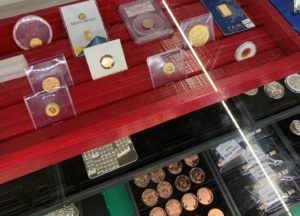Transportation is one of the major polluters of the environment, both in the non-renewable resources it burns and the exhaust it puts out into the environment. So it’s natural that both consumers and manufacturers are looking for solutions to transportation that are cleaner, greener and more sustainable. Hybrids are already on the market. Tesla has inspired even major companies to begin developing their own electric vehicles and hybrids.
One new trend that’s just developed in the past few years is a push to create “solar cars” — electric vehicles that use solar panels to add to their range. And, maybe, cars that are powered entirely by solar energy.
Why Solar Cars?
Private vehicles create up to 73 percent of the pollution in the environment. The push for electric vehicles may help reduce this number, but if the electricity you use to charge your vehicle comes from a non-renewable source (which it might, and you probably don’t have any control over), your electric vehicle isn’t helping the environment as much as it could be. A vehicle powered entirely by solar energy would be guaranteed to be clean — and like electric vehicles, wouldn’t pump dangerous chemicals into the local environment in the form of exhaust.
Solar Hybrid Cars
Right now, there are no full-solar cars in development. There are, however, a number of hybrids — cars that add solar tech to electric vehicles — that are coming to the market. The Sono Motors Sion, the Lightyear One and the Toyota Solar Prius are the solar cars you’re most likely to see on the road in the next few years.
The Sono Sion
Sono Motors is a German electric vehicle startup. The Sion will be a self-charging electric vehicle — effectively, an electric vehicle with integrated solar panels that should allow the car to charge even when not plugged in. The solar panels on the Sion are expected to generate up to 34 kilometers (around 21 miles) of extra range each day — enough to just barely cover the average American commute, there and back.
One of the more interesting features of the Sion is its air purification system. Strands of island moss, integrated into the dashboard, will help filter out particles in the air while also regulating temperature and humidity. It’s not clear if the moss will require any special upkeep.
The Sion will start at $28,100, making it remarkably affordable for an electric vehicle. It is expected to enter production in the second half of 2020, and hit the European market either that year or the next.
The Lightyear One
Unveiled in 2019 — and designed by the team of engineering students that won the World Solar Challenge race in 2013, 2015 and 2017 — the Lightyear One is an electric vehicle that will come equipped with solar panels. Lightyear expects the One to have a base range of about 450 miles. For every hour spent charging in the sun, the solar panels should add around 7.5 miles to the car’s range.
The Lightyear One, however, is definitely a luxury vehicle. The car is expected to start at €149,000 (or about $170,000). That is, as Jon Porter writing for the Verge notes, enough to buy an electric car, install solar panels on your house, and have some cash left over.
The Lightyear One is expected to launch in 2021.
The Toyota Solar Prius
The current production Toyota Prius already offers solar panels as an option. But the new Toyota Solar Prius will feature solar panels developed by Sharp — ultra-thin panels normally used on satellites. These solar panels are expected to have much higher efficiency than silicon solar panels, which are the most ready-available kind of solar panel. Toyota expects these panels to add as much as 35 miles to the car’s range.
So far, Toyota hasn’t released an estimated price or launch date for the Solar Prius.
How Efficient Will These Hybrids Be?
Sono Motors claims that the Sion solar panels will have an efficiency of around 25 percent. Toyota claims that the Sharp solar panels used on the solar Prius will have an efficiency of 34 percent. Both estimates are optimistic, but definitely not impossible. Silicon solar panels max out at around 33 percent efficiency. The best-on-the-market silicon solar panels collect 22.8 percent of solar energy. The average? Around 15 percent. If you have average solar panels on your car, you’ll have enough charge after eight hours to travel 1.5 miles.
Sharp advertises their solar panels for home systems as having an efficiency of around 32.5 percent.
(The current world record for solar panel efficiency is 46 percent. The materials used to make that panel, however, are far too expensive for mass production.)
And it’s not hard to make a solar panel even less efficient — dirt, dust, clouds, damage sustained by rocks or highway debris — all of these can reduce the amount of energy a solar car collects.
Sono Motors expect the Sion’s solar panels to add 21 miles to its range. Toyota claims that the Sharp solar panels on the new Prius will add 35 miles.
Some experts estimate that the actual added range of these new hybrid solar cars will be much, much lower. Some particularly unoptimistic estimates for the Karma Revero, a solar hybrid announced in 2016, hover around just 1.5 miles. That’s a far cry from even the modest 18 miles promised by Sono Motors. But none of these vehicles have hit the market yet — or even have an estimated release data — and it’s impossible to know right now how much mileage these solar panel arrays can actually provide.
So the solar-powered mileage won’t be much compared to most cars. But would future advancements in solar power make a full-solar car possible?
Why There May Never Be Full-Solar Cars
The science rarely says no outright, but in this case it’s definitely urging caution. Even the most energy-efficient solar panels possible won’t be enough to create a full-solar car with a range comparable to modern electric vehicles — unless you want to wait multiple days for the car to charge. This is because of the science behind how much energy solar panels can collect.
About one kilowatt (kW) of solar energy falls on each square meter of Earth during the day. The actual amount varies from place to place — as low as .2 kW in Norway and as high as 2 kW in Saudi Arabia — but 1 Kw is a good enough working average. So that means even a hypothetical, super-efficient solar panel, one that collects 100 percent of solar energy, can only collect one kilowatt-hour per square meter of paneling for each hour of sunlight.
A Tesla Model 3 gets about 4.1 miles for every one kilowatt-hour. Assuming our solar car has the same energy efficiency, with four square meters of impossibly-efficient solar paneling (the amount Sono Motors plans to fit on the viSono) you would need around six and a half hours of uninterrupted charging to drive 100 miles. Switch back to real-world efficiency (around 25 percent) and you would need around 26 hours of sunlight to get 100 miles’ worth of energy.
The long charging time isn’t great. But there are other complaints that make the idea even less practical. What if I have store my solar car in the garage? What if I live somewhere with frequent cloud coverage, or snow? And solar panel efficiency decreases if the panels aren’t perfectly aligned with the sun. So even a super-efficient solar panel could be made inefficient by a slight hill grade.
All this doesn’t make full-solar cars impossible, just somewhat impractical. A full-solar car may need multiple charges to have a range comparable to conventional or electric vehicles. But charging could, in theory, happen at any time of the day. Larger solar vehicles which transport more passengers — like buses and trains — could fare better due to their larger surface area-to-weight ratio. (And, weirdly enough, 100 percent may not be the upper-limit on solar efficiency.)
Hybrid Solar Solutions
Right now, no company is pushing for a full-solar car. And unless (or even if) major advancements are made in solar panel technology, fully-solar powered cars are not likely to be on the market any time soon.
But that doesn’t mean that solar has no place in automotive engineering. Designers are instead turning their attention to how solar can be integrated into electric vehicles to make them more effective. Tesla even plans to use solar glass to turn the sunroof on future Tesla vehicles into a transparent solar array. (And some current Tesla vehicles come with a solar panel array that can be stored in the trunk and unfolded over the roof. Features like these may be standard in the future.)
If you just want a hybrid solar car, you won’t have to wait long. Most solar cars currently in development are expected to hit the market within the next three to five years.
The Future of Solar Cars
It’s likely that solar panels on cars will go the way of solar panel arrays for houses — not widely adopted, not enough to be a sole power source, but cleaner than many other options and a way to save some money. You probably won’t see a full-solar car on the road, but solar power is definitely becoming more reasonable, cheaper, and something that makes more sense for manufacturers. And on some cars, solar paneling is already available as an add-on feature. Solar energy isn’t the future of cars — but it will almost certainly be part of it.











